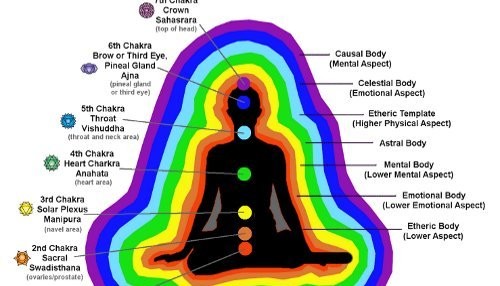
What are some meditation techniques?
According to Advaita Vedanta or non-duality, spiritual sadhana consists of 3 steps, namely:
#spiritualawakening #meditation
According to Advaita Vedanta or non-duality, spiritual sadhana consists of 3 steps, namely:
#spiritualawakening #meditation

Shravanam - listen to words of wisdom from the experts who have been there.
Mananam - contemplate on what has been heard & make it part of memory or psyche. This is wisdom.
Nidhidhyasanam - put this wisdom into action in every area of your life.
#spiritualawakening #meditation

Mananam - contemplate on what has been heard & make it part of memory or psyche. This is wisdom.
Nidhidhyasanam - put this wisdom into action in every area of your life.
#spiritualawakening #meditation


There different types of meditation:-
Progressive muscle relaxation- in this type of meditation techniques we focus ourselves and reconnect with our body part and experience the sensory paradigm, be focused, and find relaxation.
#spiritualawakening #meditation
Progressive muscle relaxation- in this type of meditation techniques we focus ourselves and reconnect with our body part and experience the sensory paradigm, be focused, and find relaxation.
#spiritualawakening #meditation

Trataka meditation- in this we need to do practice to do this in good manner. It helps to purify your eyes to leave them clear and bright, strengthen your focus, and cleanse your mind.
#spiritualawakening #meditation
#spiritualawakening #meditation

Mantra Meditation- In this we practice a mantra which is given to us by our guru. The best practice is to repeatedly chant that mantra silently. 

Kirtan Meditation: - In this a devotees sing song, dance on spritual song etc.
#spiritualawakening #meditation
#spiritualawakening #meditation

Chakra Meditation:-
Chakras are energy centers that reside within our body. There are seven core chakras that must remain healthy for our physical and mental well-being
#spiritualawakening #meditation
Chakras are energy centers that reside within our body. There are seven core chakras that must remain healthy for our physical and mental well-being
#spiritualawakening #meditation

Concentrative Meditation
Concentrative technique is where one sits focusing on a single thing or point. It is difficult in the beginning but it helps in improving concentration.
#spiritualawakening #meditation
Concentrative technique is where one sits focusing on a single thing or point. It is difficult in the beginning but it helps in improving concentration.
#spiritualawakening #meditation

One can perform with,
• Focusing on breath.
• Repeating a single word or mantra.
• Visualize the single object.
• Counting beads.
• Listening to a repetitive song.
#spiritualawakening #meditation
• Focusing on breath.
• Repeating a single word or mantra.
• Visualize the single object.
• Counting beads.
• Listening to a repetitive song.
#spiritualawakening #meditation

Mindfulness Meditation
A technique where one sits with closed eyes & lets go the thoughts that come up. Don't judge them or get stuck in them, nor get affected by them. Let them pass and feel the moving patterns of thoughts and feelings.
#spiritualawakening #meditation
A technique where one sits with closed eyes & lets go the thoughts that come up. Don't judge them or get stuck in them, nor get affected by them. Let them pass and feel the moving patterns of thoughts and feelings.
#spiritualawakening #meditation

Perform with all your awareness.
This practice will help in develop awareness and inner balance.
#spiritualawakening #meditation
This practice will help in develop awareness and inner balance.
#spiritualawakening #meditation

Metta Meditation
The word 'Metta' means kindness or good will.Metta meditation technique is where one sit with closed eyes and generates a feeling of loving and kindness in mind.
#spiritualawakening #meditation
The word 'Metta' means kindness or good will.Metta meditation technique is where one sit with closed eyes and generates a feeling of loving and kindness in mind.
#spiritualawakening #meditation

One can perform this practice for
• Love & kindness towards self or a good friend.
• Towards a neutral person or a difficult person.
It helps develop love & kindness for self, increased self acceptance, increased sense of life's purpose.
#spiritualawakening #meditation
• Love & kindness towards self or a good friend.
• Towards a neutral person or a difficult person.
It helps develop love & kindness for self, increased self acceptance, increased sense of life's purpose.
#spiritualawakening #meditation

• • •
Missing some Tweet in this thread? You can try to
force a refresh





















